Avid gardeners have a lot to celebrate in the New Year — a fresh garden season and innovative, new plant introductions for the garden. Here are some exciting new varieties to look for at your local garden centers. If you don’t find them on the shelves, ask your favorite nursery to order them for you.
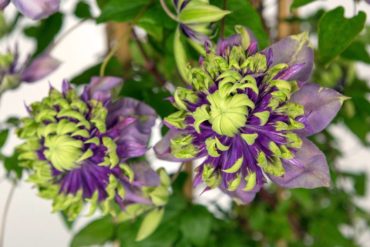
Clematis Florida Hybridus ‘Taiga’
With hundreds of species of clematis and too numerous to count cultivars, it is not too often we become overly excited about another new clematis variety to hit the nursery trade. However, when a breeder from Japan creates a floriferous work of art with dazzling, blue-purple flowers with lime-green petal tips, the world takes notice.
The exotic, passion-flower-like Clematis florida ‘Taiga’ is a masterpiece in clematis breeding. The vine’s breeder, Shigeaki Ochiai, named it Taigah (pronounced TIE-guh), which means great river. The unusual flowers develop in three phases. The blossoms start with the bud opening in single flowers. Later they open with large, double flowers. The long bloom period adds to its value as a landscape plant, with flowers beginning in May and ending in September.
Introduced at the Chelsea Garden Show in England in 2017 and nominated for the Best in Show award, the vine created a stir in Europe. In 2016, ‘Taiga’ won the Dutch trade fair Plantarium’s Press Award. Clematis ‘Taiga’ has now reached the Kitsap Peninsula shores. Local nurseries will be stocking this award-winning vine on their shelves.
The 8-foot-tall vine grows on fences, trellises and obelisks. This vine would look superb growing through a large shrub with yellow to golden foliage, such as the Dart’s gold ninebark (Physocarpus opulifolius ‘Dart’s Gold’).
- Height: 8 feet
- Width: 5 feet
- Light: Full sun to part shade
- Soil: Well-drained, fertile, humus-rich
- Feeding: In early spring, fertilize with an all-purpose, organic fertilizer. Mulch with compost or leaf mold.
- Pruning: Pruning group C. Blooms on current year’s growth. Prune just above a strong pair of leaf buds (about 1 foot) in late winter to early spring.
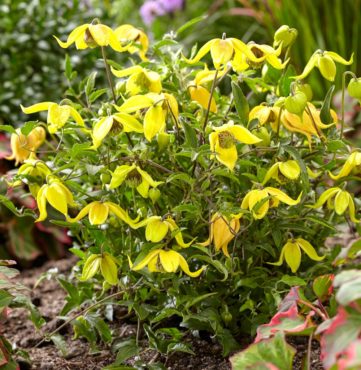
Clematis ‘Zo14100’
Most people think vine when it comes to clematis; however, Clematis ‘Zo14100’ is not a vine — it is a perennial. Breakthrough breeding produced this nonclimbing, dwarf clematis from the Tangutica group. It is an unexpected pleasure to see this one growing so close to the ground, knowing it comes from the dynamic, growing group.
The perennial is equally at home in hanging baskets or containers. Lemon-yellow, nodding flowers cover the plant from mid-May until early September. The terminal flowers produce attractive, silky seed heads that last for a few weeks, yet the side shoots do not.
Clematis ‘Zo14100’ was voted best novelty plant of Plantarium 2019. Sold under the tradename of Little Lemons, the perennial was awarded a gold medal from the Plantarium 2019 for best novelty plant.
- Height: 12 inches
- Light: Full sun to part shade
- Soil: Well-drained, fertile, humus-rich
- Feeding: In early spring, fertilize with an all-purpose, organic fertilizer. Mulch with compost or leaf mold.
- Pruning: Pruning group C. Blooms on current year’s growth. Prune just above a strong pair of leaf buds (about 1 foot) in late winter to early spring.
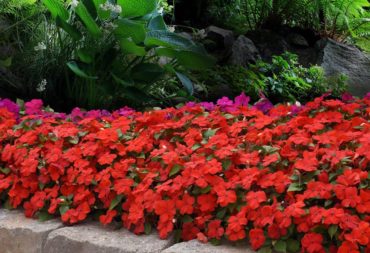
Impatiens Walleriana Beacon Select
Gardeners, rejoice — the much-loved shade garden stalwarts, Impatiens walleriana (often called busy Lizzy), is making a comeback. It was not available in nurseries for many years due to the Impatiens’ downy mildew (IDM) problems. Reports of the disease began in 2004, but in 2011 widespread regional outbreaks took hold. The destructive foliar disease spreads fast, decimating the annuals.
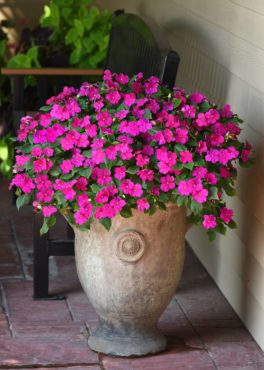
The spores from the host-specific water mold, Plasmopara obducens, are not only airborne, but also winter over in the soil. It has been near impossible to grow these popular plants — until now. Gardeners around the globe have missed these popular shade-tolerant annuals. Making a comeback, this select group of Impatiens walleriana is highly resistant to IDM.
PanAmerican Seed, a Netherlands team led by Ruud Brinkkemper, along with an American team with product manager Lisa Lacy, plant pathologist Dr. Colleen Warfield and others, searched for plants resistant to the disease. After many plant trials, they selected those that showed high resistance to the condition.
They’re available as bedding plants at nurseries and other retailers. If you want to start plants from seed, they are available this year through the W. Atlee Burpee 2020 catalog.
- Height: 15-20 inches
- Width: 12-24 inches
- Light: Shade, partial sun, full sun
- Soil: Humus-rich, moist, well-drained
- Feeding: Every two weeks with a water-soluble fertilizer
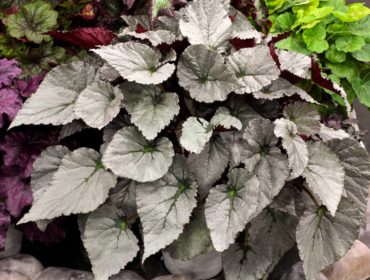
Begonia ‘Treasure’
Oregon-based grower Terra Nova Nursery has produced this handsome, evergreen, silver-leaf begonia, as part of its Silver Begonia series. The plant took Best of the Best award at the 2019 Trial Gardens at the University of Georgia, and a winner it is! A hardy begonia you can plant in the garden and mulch. The begonia also does well in hanging baskets and containers. However, you will want to overwinter in a protected garage or greenhouse.
If you want more foliage choices for your shade containers, this silver fox adds a silver dimension that pairs with almost any color. Blooming summer to fall, the flowers are soft pink — but grow it for the wavy, silvery foliage with a dense shrubby habit.
- Height: 14 inches
- Width: 25 inches
- Light: Shade
- Soil: Fertile, rich, moist, well-drained
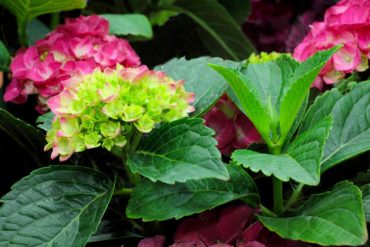
Hydrangea Macrophylla ‘Horthart’ Seaside Serenade
Cape Hatteras Hydrangea
In August 2019, Monrovia introduced this tetraploid, compact hydrangea in the New Varieties Showcase at the Farwest Show in Portland, Oregon. This fantastic little shrub fits into small spaces, but the flowers are as large as any other mophead hydrangea.
There are no wimpy stems for this hydrangea. The extra-sturdy stalks hold up the large flower heads with ease.
The burgundy-red flowers hold their color for a long time. They start green, and before they turn entirely red, they have a marvelous two-tone effect. For the vase, they make excellent cut flowers, either fresh or dried.
- Height: 3-1/2 feet
- Width: 3 feet
- Light: Morning sun with afternoon shade
- Soil: Moist, humus-rich, well-drained. Hydrangeas need supplemental irrigation during summer droughts.
-
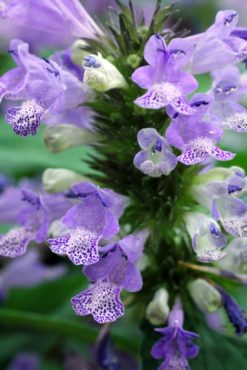
The large blue flowers make this catmint a showstopper, while the scented foliage attracts beneficial insects to the garden. (Photo courtesy Debbie Teashon) Feeding: Apply a yearly mulch of compost or composted manure. Fertilize in spring and twice in summer. Do not fertilize after August.
- Pruning: Annually remove dead and deadhead flowers as needed. If pruning is necessary, do it before August.
Nepeta Subsessilis ‘Balneplud’ Blue Prelude
This compact, mounding, short-stalked catmint with minty fragrant foliage is not only disease- and insect-resistant, it has a long flowering time. With N. subsessilis in its bloodline, it means large flowers. The large blue flowers make it a showstopper, while the scented foliage attracts beneficial insects to the garden.
The perennial flowers the first year in the garden, and by the second year, the plant will grow to its full potential of 3 feet tall. This catmint will take moister conditions than most of these perennials.
- Height: 28-36 inches
- Width: 11 inches
- Light: Full sun to partial shade
- Soil: Moist, well-drained
- Pruning: After flowering, prune stalks back to promote bushy growth.





























Comments